Traditional handcraft

Our furniture is traditionally made and extremely comfortable thanks to quality springs. The webbing also ensures a solid basis, making the furniture last for years.
- Once the hides arrive at our workshop, the cutter sorts them by size in order to limit cutting loss as much as possible. Patterns are cut from the hides for the various types of armchairs using templates.
- In the mean time, the trunk builder starts with the beech trunk, done according to client specifications in order to guarantee seating comfort.
- The next step is covering the trunk by applying wet leather on it.
- The piece of furniture is placed to dry for 24 hours in a special drying chamber where it will shrink by 8%, so that the leather fits nice and tight on the trunk.
- Then, the piece of furniture is finished: using natural staining the leather is manually patinated and again placed into the drying chamber. Finally, the piece of furniture is waxed using white beeswax.
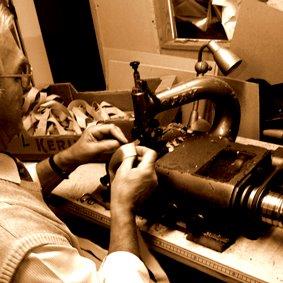
Skiving
Skiving shaves off part of the leather to make it thinner using a very sharp knife. There are skiving machines with a razor-sharp, rotating knife that pares away a layer of leather. Skiving is a relatively difficult technique and requires much practice.
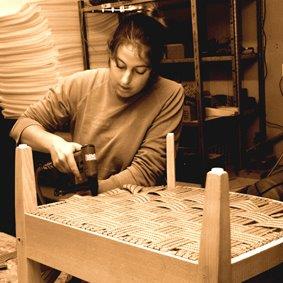
Webbing
Webbing the surface must be done with high quality jute webbing, as it is strained once the springs are fitted. The webbing is attached piece-by-piece and stretched with a wooden stretcher. The tension is also needed for strengthening, as it stretches out the material for the first time.
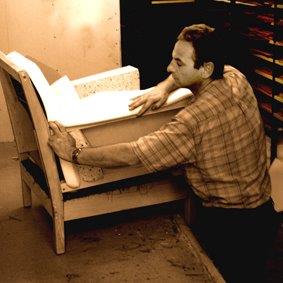
Polyether
The covering consists of a total of seven layers: lining, Polypress, crin, Dacron, polyether, washed cotton and finally the hide.
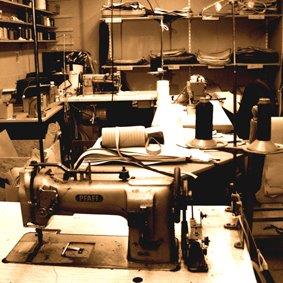
Sewing
Thin leather is sewn using a very sharp needle, while thick leather is sewn using a blunt one. Sewing is done with iron thread. Armchairs and sofas with padded backs require much stitching, as the leather is cut into diamonds and then stitched together.
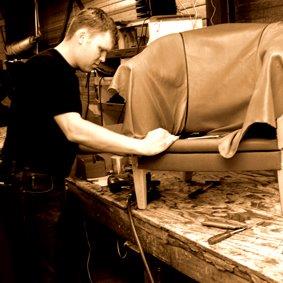
Covering
The next step is covering the trunk, which is done in seven layers: lining, Polypress, crin, Dacron, polyether, washed cotton and finally the hide, which is placed wet on the trunk in order to obtain a perfect wrinkle-free piece of furniture.
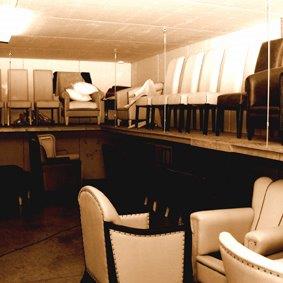
Drying chamber
The piece of furniture is placed to dry for 24 hours in a special drying chamber where it will shrink by 8%, so that the leather fits nice and tight on the trunk. Later when patinated, the piece of furniture will be placed in there again.
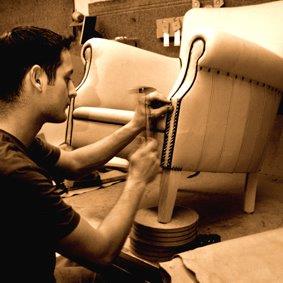
Nailing
Now it’s time to finish the leather. Many types have standard nails, but leather piping, even in a contrast colour, can also be used. The nails are hammered in manually one by one, as strips are not used.
Varnish
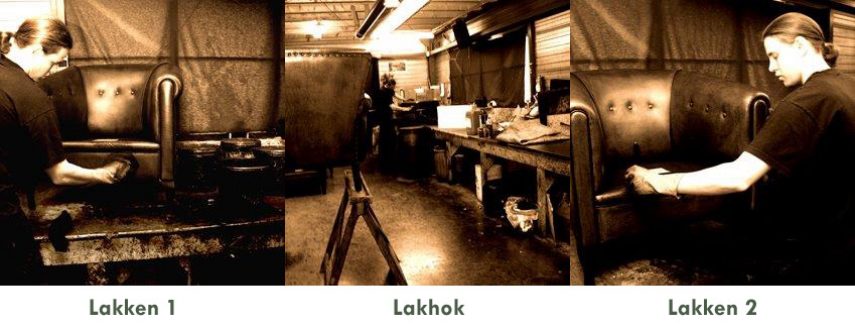
Furniture polish
Finally the piece of furniture is finished with white beeswax.
We are often asked for furniture wax or furniture polish. We would rather use turpentine wax, Briwax, chalk wax, liquid wax, beeswax, paraffin wax and many others to preserve your furniture.
Wax products are used to provide furniture with a protective coating, freshen them up, hide wear and provide a pleasant odour in the home. Wax products contain almost all the same ingredients, although they come in various formulations.
Beeswax, carnauba wax, turpentine oil and fillers can all be found in every furniture wax. Try them out to find out which one works best for you.